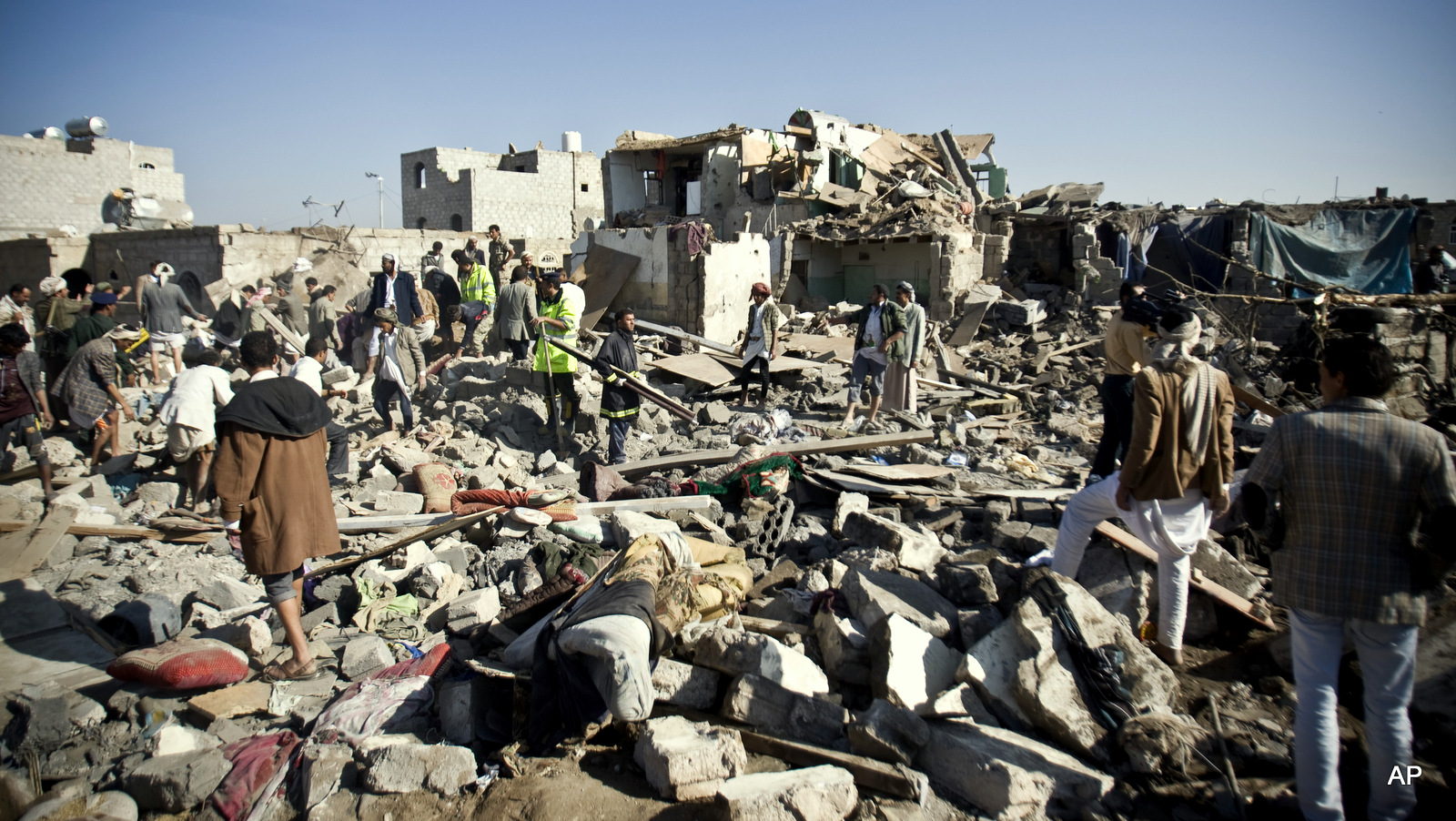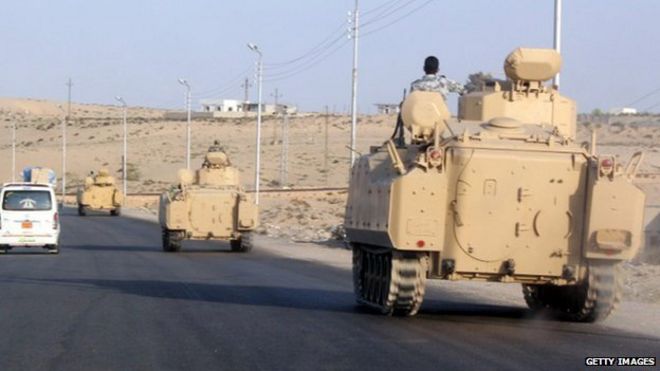New world order will entrench rifts in the Mid-East

People search for survivors under the rubble of houses destroyed by Saudi airstrikes near Sanaa Airport, Yemen, in March 2015. Photo by Hani Mohammed/AP
The rising order of the Middle East
By Lorenzo Kamel, MEMO
July 15, 2017
In the last few years a number of scholars have focused on the thesis of the end of the “Sykes-Picot order”, alluding to the secret deal between British diplomat Mark Sykes and his French counterpart François Georges-Picot in 1915-16.
In truth, by the end of World War I the Sykes-Picot Agreement was already a dead letter and virtually all the issues (including the internationalisation of Jerusalem) discussed in 1915-16 have had [no chance of] being implemented, or are no longer relevant.
What is still relevant, however, is the mindset through which British and French authorities approached the region particularly in the historical phase in which that agreement was signed. London and Paris defined local realities and dissent as expressions of primitive religious cleavages and placed their newly crafted communal institutions (like the Supreme Muslim Council in Palestine, but also, mutatis mutandis, the Mandate system) as modern systems above what they perceived as a “medieval fray”.

Egyptian armed forces patrol N. Sinai. It would please Israel, the USA and Saudi Arabia to ‘relocate’ Gazan Palestinians here as a protectorate of the UAE and Saudi Arabia. Photo by Getty Images.
The second strategy, through which Mohammed Bin Salman was made first in line to the throne at the expense of his cousin Mohammed Bin Nayef, was availed [taken advantage of] by Washington on condition of complying with US and Israel’s goals in the region. This includes the attempt at dismantling Hamas and the resettling of most of Gaza’s residents in North Sinai, where Saudi Arabia and the UAE will provide the necessary facilities and funds.
Communal and judicial structures envisioned and implemented in the second decade of the last century, in other words, succeeded in legally enshrining religious differences: a long-lasting outcome of the Sykes-Picot Zeitgeist.
Today, a new Sykes-Picot era is unfolding in the Middle East. In comparison to one century ago, it will have more complex global repercussions. Yet, some similarities can also be seen: the “new Sykes-Picot”, as its older version, will foster the conditions for enhancing fractures among the Arab states and will make the region increasingly dependent on external actors.
Two agendas, one order
The current phase passes through two competing regional and international agendas, both underpinned by uncompromising ideologies. The first aims at maintaining and strengthening an intra-regional geopolitical line across Tehran, Baghdad, Damascus and Beirut. The second at imposing a new, largely Western-led, order in the region.
At the moment, this second “agenda” would seem to have higher chances of success, as confirmed by three recent strategic moves:
· The decision taken by some Gulf states and Egypt to cut ties with Qatar.
· The sudden elevation of Mohammed Bin Salman to the position of Saudi crown prince.
· The agreement to transfer Tiran and Sanafir islands from Cairo to Riyadh.
The Qatar crisis is meant to provide a clear sign to regional actors, to show the consequences that will be faced by those – beginning with Turkey – unwilling to align themselves with the anti-Iran front and the tacit agreement that binds Israel to Saudi Arabia and its allies.

The Saudi Crown Prince unexpectedly named his successor as the Saudi defence minister Mohammed bin Salman bin Abdul Aziz on June 21st 2017, a month after the visit by US president Trump. The new Crown Prince wants to implement a more anti-Iran policy. He is shown here [R] with Saudi air force officers discussing the military operations against the Shia Houthi rebels in Yemen. Photo on March 26, 2015 by Saudi press agency.
The second strategy, through which Mohammed Bin Salman was made first in line to the throne at the expense of his cousin Mohammed Bin Nayef, was availed [taken advantage of] by Washington on condition of complying with US and Israel’s goals in the region. This includes the attempt at dismantling Hamas and the resettling of most of Gaza’s residents in North Sinai, where Saudi Arabia and the UAE will provide the necessary facilities and funds.

Last but not least, the transfer of Tiran and Sanafir from Egypt (whose sovereignty over the islands dates to a 1906 treaty) to Saudi Arabia. The deal, ratified by President Al-Sisi despite the strong opposition expressed by much of Egypt’s public opinion, allows Riyadh to have full control of the access to the Gulf of Aqaba.
A number of Saudi sources confirm that “Saudi-Israeli relations are the main gateway to understanding the issue of the islands, the transformations in the region and the backstage deliberations over the Palestinian cause.”
Riyadh, that in 2015 signed a memorandum of understanding for its forces to be trained by Israel, now controls Israel and Jordan’s access to the Red Sea and is in the position of cutting Tehran out from much of the commercial trades in the area.
Preserving tyranny: whose interest?
One century ago the Sykes-Picot system hindered or postponed the rising of a new order shaped from within the region. In some respects, what we are witnessed in recent years is the final point of an historical impasse that lasted for about one century. The final result, however, will most likely be, once again, not the one hoped for by most of the region’s people.
The current transitional phase was initially handled with an ambiguous yet cautious approach by the Obama administration. President Trump, on the contrary and despite easy impressions, has a clearer agenda. Oppressive regimes are once again considered part of the solution, and not of the problem. As one Israeli ex-general said in 2015 to Michael Oren, his country’s former ambassador to Washington:
“Why won’t Americans face the truth? To defend Western freedom, they must preserve Middle Eastern tyranny.”
Local “tyrannies”, for their part, are ready to pay a high price to guarantee their survival. This also explains why over the last six years Riyadh has invested an enormous amount of resources in opposing the rise of any government or party that, in the Arab world, could have represented a credible alternative to the “Saudi model”. It also sheds light on Riyadh’s decision to support the Egyptian army in the coup against former Islamist President Mohamed Morsi.
In the short term, ruling families and regimes will gain much from these strategies and the new order in the making. The long term scenario, however, is far less promising. The region is highly changed from the previous decades and particularly since 2011: grab-and-go “solutions” and ideologies used in the past to divert the attention of the region’s people (pan-Arabism, pan-Islamism, anti-Israel claims etc) will have much less appeal in the near future. This further confirms that the new Western-led order fostered by Riyadh has high chances of backfiring. It will in fact lead to an even more externally dependent Middle East, but also to the further weakening of the Saudi Kingdom and the increasing “Balkanization” of a large part of the region.
Lorenzo Kamel is a Middle East historian at Bologna University’s History Department and a Postdoctoral Fellow at Harvard University’s Center for Middle Eastern Studies. He is also Senior Research Fellow at the Istituto Affari Internazionali (IAI) and scientific coordinator of the project ‘New-Med, The Future of Cooperation in the Mediterranean’ (funded by Compagnia di San Paolo, OSCE, The German Marshall Fund of the United States, and the Italian Foreign Ministry).
He obtained a two-year’s M.A. in Israeli Society and Politics at the Hebrew University of Jerusalem, a Ph.D.in History at Bologna University, and received the 2010 ‘International Giuseppe Sciacca award’ and the Marie S. Curie Fellowship by the European Commission at the Freiburg Institute for Advanced Studies (FRIAS). He spent extensive periods of time as a Visiting Scholar in the Palestinian Territories (Birzeit University), as well as in Egypt (‘Ain Shams University), Israel (Hebrew University), and Turkey (Bilkent University).
